A Visit with Author/Illustrator Jane Breskin Zalben
 September 10th, 2012 by jules
September 10th, 2012 by jules
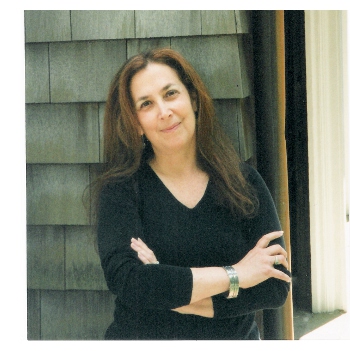 I’m happy to be having late-night coffee with author/illustrator Jane Breskin Zalben, who has created in her career more than fifty books for children. Most of those are picture books, but she’s also written YA novels, chapter books, and even cookbooks. She has also worked as an art director, as you can read below.
I’m happy to be having late-night coffee with author/illustrator Jane Breskin Zalben, who has created in her career more than fifty books for children. Most of those are picture books, but she’s also written YA novels, chapter books, and even cookbooks. She has also worked as an art director, as you can read below.
Jane’s latest book, released in August by Neal Porter/Roaring Brook, is called Mousterpiece and centers around a young mouse, named Janson. She lives in a museum and loves exploring it each night after dark. When she finally explores the famous paintings hanging in the museum, giving readers a glimpse of the world of contemporary art, “her little world opened.” She emulates the iconic paintings she sees, meeting some acclaim of her own — but eventually comes to understand that the artwork that expresses her own style, her own voice, is her favorite. Booklist calls this a “charming introduction to modern art and an inspiring starting point for young art students.”
“The book,” Jane tells me, “is dedicated to my mom. She was a children’s book librarian in Manhattan in a private school for children with learning disabilities and put together their first library. Years and years ago!”
I thank Jane for visiting today. I enjoyed the opportunity to ask her not only about this book, but also—given her lengthy career in this field—about children’s literature today and how it’s changed over the years, as well as what’s next for her.
Jules: Did something in particular inspire this story?
Jane: I fell in love with art as soon as I could hold a crayon in my hand.
By five years old, my mother took me on weekends from Queens, New York, to the Metropolitan Museum of Art in Manhattan, where I had morning painting lessons. In the afternoon, we would have lunch at the cafeteria — with dill pickles and an iced cruller! On special occasions, we would eat upstairs around a low pool, built like a Roman bath, surrounded by classical sculpture and massive columns, which was evocative for a young child and has appeared in many of my novels. I would throw a penny in the water and make a wish. In the afternoon, we would tour the American Wing with rooms of old furniture, the kind my main character lives in, and then make our way in time through the galleries to modern art — just like Janson, my little mouse!
It was obviously a seminal time in my beginning development. Years followed with more art lessons in basements, a 6th-grade scholarship to Pratt Institute to study how to make linoleum cuts, The Art Students League at eleven to create my first portfolio, life drawings. (Don’t ask!) And ultimately applying to The High School of Music & Art, where I had to decide: Do I want to be a pianist or a painter? Similar spelling, different paths. One made me nervous to perform; the other was a dream — to make something out of nothing in a studio, like Janson, the mouse in this picture book.
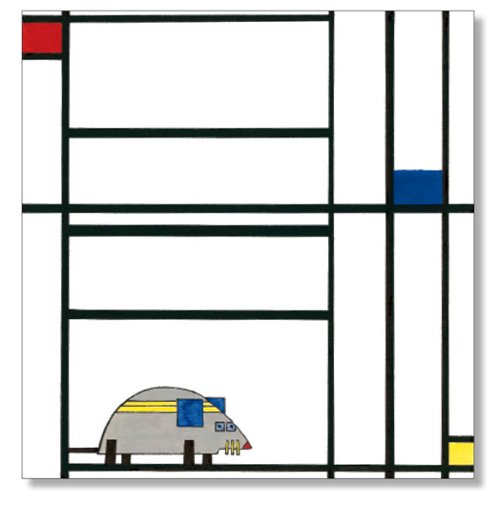
I was a Fine Arts major in college –- focusing on huge modern paintings, etchings, and typography. I used the name Janson, because History of Art by H. W. Janson was “the Bible” of all art students in exploring and understanding the universal questions: “What is art? Or why is this art?”
I wrote this book after my first and only trip to Italy. People would say, “I can’t believe you haven’t you been there. You’re an artist. Your husband’s an architect. You love to cook. The food!” Need I say more? My friend who writes art books for children said, you must go to Venice and see Peggy Guggenheim’s collection of modern art. Since I mostly work and I do watch my income, on a landmark birthday my husband surprised me with airline tickets at a party he threw (besides a box of Godiva chocolate hearts, much to the chagrin of other men there, who said, “gee, thanks a lot for thinking that gift up…”). We went to the art/architecture Biennale that fall. I stood outside that museum on the canal and cried; I was so moved, seeing so much wonderful modern art in one place. It inspired me to come home and write this book.
[And] it all began at five years old.
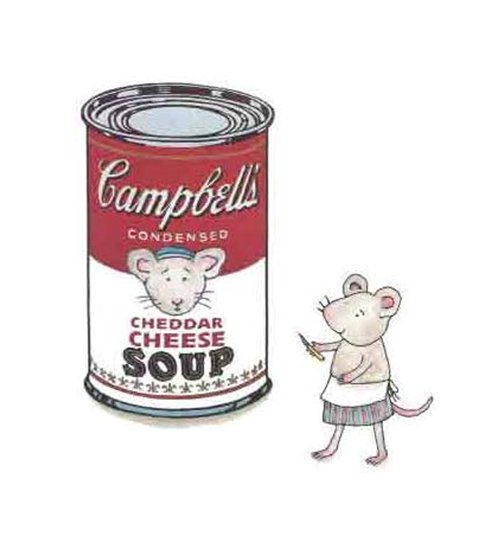
Jules: Tell me more about your time as an art student, which you also mention at the book’s close. Did you know back then you wanted to create picture books?
Jane: My first encounter was in high school, where I realized this was it. I love art. It is who I am.
I had thought that maybe I would go into advertising, so I could earn a living. My parents were anxious about me being a painter. I lived and breathed art — besides boys, dancing, and reading. They had thought, become an art teacher.
But I needed to paint and studied with an artist who was a chemist/painter, involved in the invention of acrylics and color theory, and who had worked with [John] Ferren, [Josef] Albers, and others.
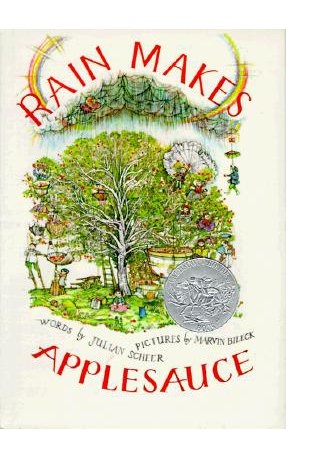 I also studied with Richard Serra and Marvin Bileck. When I met Bileck (“Buddy”), we became very close, and as my mentor, this artist of Rain Makes Applesauce opened up a world of beautiful papers, the surface you draw on, the brush that you use. It was a new way of thinking for me — and still is. He had won a Caldecott Honor, which I had never heard of, and all I knew is [that] I fell in love with book-making. I liked the physicality of the book—the smell, the ragged edges of the pages, the binding, the endpapers—every single detail, down to how the type was placed on the page and the space between -– the air. As they say in music, the notes not played.
I also studied with Richard Serra and Marvin Bileck. When I met Bileck (“Buddy”), we became very close, and as my mentor, this artist of Rain Makes Applesauce opened up a world of beautiful papers, the surface you draw on, the brush that you use. It was a new way of thinking for me — and still is. He had won a Caldecott Honor, which I had never heard of, and all I knew is [that] I fell in love with book-making. I liked the physicality of the book—the smell, the ragged edges of the pages, the binding, the endpapers—every single detail, down to how the type was placed on the page and the space between -– the air. As they say in music, the notes not played.
By the time I graduated college, I had a list of ‘people in the field to see’ and went around with a portfolio I had created so that maybe I could get a book of my own to do. I was 21. One person sent me to another until I landed on the doorstep of the art director at Dial Press, who designed Maurice Sendak’s books, as well as many other ‘big names,’ and she offered me a job three days as her assistant. “I will teach you everything I know.”
And she did. (I ultimately became an art director of children’s books at Scribner’s.) At that same time, I went around during my lunch hours with my own work and book dummies. My first editor was Susan Hirschman at Macmillan. Both she and the head of Dial had been assistants of Ursula Nordstrom at Harper, so my education in how to write books and make the art grew in a way I had never expected.
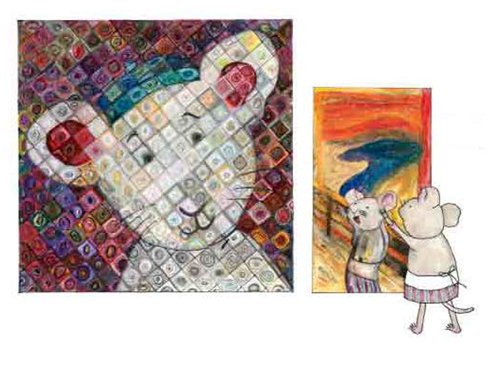 “…until one by one the walls were filled with art.
“…until one by one the walls were filled with art.
The more she painted, the happier she became.”
My first book was signed up a year after I graduated. At the time, it seemed like forever. I also was a designer for Anne Beneduce, who ultimately became my editor as well. She is also Eric Carle’s editor and introduced me to a wider scope of books -– international book publishing and the sensibility of European artists.
By the time I started working with Sandra Jordan, her assistant, who became editor of Farrar Straus & Giroux, I went again in a direction I never knew I would. I began having children and Sandra said, “I think you need to write longer than the 32 pages of a picture book.” And that is when I began writing young adult novels. Which is a whole other story of something else that is so deep in my heart.
(Click to enlarge each)
Neal Porter was at FSG, and now, so many years later, we were reunited when I was chair of the Original Art exhibition at the Society of Illustrators and Neal was a judge. Our union is wonderful and works for us both. He turned around to me and said on the spot, just like the experience of my first book being published, “I love it. I’m going to take it.” The best words an author/artist can hear.
Jules: You’ve created more than fifty books for children. Since you’ve been in this field for years, I’m curious what advice you would give to new authors/illustrators.
Jane: My mother would say, “Get a day job.” I would say, “Do what you love, your passion, and develop a thick hide or be in therapy.”
(Click to enlarge each)
Seriously, you have to want to do it. Not the idea of it -– the actual doing. When I am working, I think of nothing else. It sounds so cliché, but I am “in the moment.” I can get pretty intense. I am consumed most of the time with work or thinking about the project/s.
I really love the act of making art and writing. I love being alone in a room. I love the click of the keys on the laptop, the touch of the pen to paper. Thinking. Laughing. Tearing up. At an image. Or the image created by words. I enjoy the process of re-doing. And trying to make it better. Nothing is perfect. Learning to let it go, so you can go on to another piece or work, is an act of creating.
For beginning artists and writers, even accomplished ones, I would say: ultimate patience. Because there is a lot of waiting, opinions that are relevant, those that aren’t, rejection, and acceptance. Many people cannot take it. It is very tough. It is something that you just can’t stop doing.
(Click to enlarge)
On a more grounded level, the nuts and bolts: Have a strong finished book dummy, a very tight manuscript that has been re-written more times than you care to reveal, and be willing to trash it. Begin again, hopefully with a talented, invested editor in your dream, your life’s work.
Jules: What have been some changes over the years in the field of children’s book publishing that have surprised you?
Jane: The field is not what it was. Everyone complains about this. It is a time right now that I am told is being challenged for picture books—a change like the Gutenberg Bible—and I think no one knows exactly what is to come in the world of electronic publishing and e-books. I know I could do a picture book in my sleep right now! I know the flow; the timing; the show, don’t tell. But I think no one knows what sells.
So, nothing in life surprises me. Things do disappoint me. Sometimes even shocks me in what is considered good and publishable.
When I began, there were no celebrity authors from various other fields. There were just people who were extremely talented. To me, it was like the Renaissance. There is still a lot of talent, but a lot of mediocrity in what is popular, although I think the variety in the field is interesting with new forms and techniques.
(Click to enlarge)
I like experimenting and pushing the envelope in my own work, although I do wish I could go back in time when I didn’t feel like a racehorse, and it was simply, “What’s your next book? What should we do, Jane?” And sales were not the determinant. Or marketing or megastores. Or anyone except you and your editor alone in a room. Being creative with ‘your baby.’
I mean, the original title of this book was not Mousterpiece. And this new title I had to choose was not accepted right away. It was contracted as Janson, The Budding Artist, until the sales force decided it was not catchy. So, I brainstormed with some thirty titles until I came up with the one we have. Which we all love better now. INCLUDING ME!
Everyone has backroom stories, and I could probably go on. (Most authors do when they are together alone. They do!) I guess what one is hopeful for is that your baby will be accepted and loved by someone else. Although it isn’t as simple as it was. And that makes me sad at times. It’s unavoidable. The important thing to realize is that to survive you have to change with maintaining who are you are in the context of the future. Not always an easy task. Taking risks can be growing and head you in directions you never knew. I’ve written a screenplay, done cookbooks, short stories, poetry—the list goes on—and all those things affect the work and my day-to-day life.
(Click to enlarge)
Jules: How did you choose the artists to highlight in the “Janson’s Favorite Artists” portion of the book?
Jane: These are the artists I grew up with, who were very famous in modern art movements and the world -– household names.
I wanted to add some of the other installation artists, like Jenny Holzer and others, but my editor did not think kids would get that. Originally, I had as the endpapers the words, “What is art?” in script, over and over again, although I kind of like that it was changed to the three primary colors by my editor. It was also his idea to put “Janson’s Favorite Artists” in the back matter to give an overview of the modern art movement in the 20th century, an addition I really like. The great painters who are known to the world were these, more than, let’s say, Helen Frankenthaler or Georgia O’Keeffe, although I would have loved to have to had 64 pages to include them and many more lesser known ones. I feel as if I could do another book. I would love that!
(Click to enlarge)
But the main character is female. I am female, and so I took on—or should I say Janson took on—the big guys in the art world. I never had a woman teacher in college, although I taught college for eighteen years at the School of Visual Arts, and many famous women in the field today—and men, too—were my students. I feel if I could achieve the two levels William Steig did (whom I consider an ‘existential’ children’s book author, making us think about what is truly important in life), appealing to both children and adults, then I accomplished what I set out to do. The book is a parody on modern artists, the movements, the scene of the art world, as well as what it means to become an artist, which often starts out at a very young age and grows into adulthood.
I guess the people I chose are the ones we discussed in college, the ones who were given shows, made the textbooks, newspapers, glitzy art coffee table books — the artists of museums. Where Janson lives.
(Click to enlarge)
Jules: Do you do school visits often? This strikes me as a good title to share with kids on school visits and in elementary art classrooms.
Jane: I love to go to schools and do many different programs, workshops, residences — on either writing, art, or both. And how the thread is linked for me –- the connection of the words and imagery.
I also enjoy speaking to adult groups, since I consider what I do with my life serious business. Although I tap into the child within me, I am an adult doing this! I like to show sketches, book dummies, stages of the manuscripts, the whole process of re-doing and re-writing so that the audience sees the imperfect state, because making a book is like making a big soup — and it is very important which ingredients and herbs you put in that in soup.
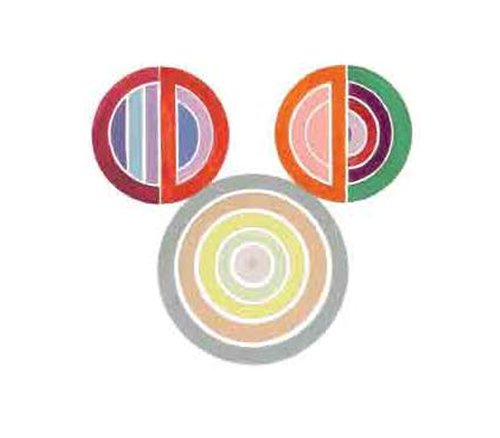
Most of all, I enjoy the give and take of a Q & A at the end –- where both the children and adults ask me questions, just like you’re doing in this interview! We learn together in that discussion of where it all comes from and how the ideas are developed into a finished book.
I agree that this particular book would be a good introduction to art, but it would also be a good introduction to finding what makes you who are you, deep inside, and sticking to it.
Jules: What’s next for you?
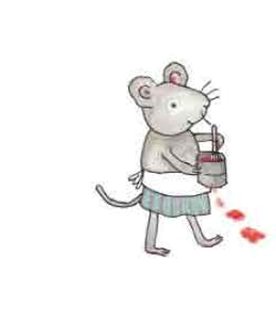 Jane: I have two novels I am working on: one young adult, coming-of-age novel, told in two voices. One middle-grade—magical realism mystery—that I would love to do with black-and-white art.
Jane: I have two novels I am working on: one young adult, coming-of-age novel, told in two voices. One middle-grade—magical realism mystery—that I would love to do with black-and-white art.
I dream about both and get up in the middle of the night with a pad, taking notes in my bathroom. I am told to focus on those, since the picture book market is changing drastically in a mercurial economy with changing technology.
Personally, I hope and feel a child will have many forms to look at, but the initial one of a lap and a book will remain. My first editor at Macmillan shared with me, “Maurice Sendak’s editor said that you could read a phone book to a child and they would be mesmerized.” That stuck with me. I have never tried that—maybe I should—but I do know that the closeness of the reading, the surprise of turning-a-page is a special act. It is a very human thing to experience on a very basic level. Or a story hour for a group of children being read to by an exuberant adult. Nothing should take that away. It is not the same as sitting alone, swiping one’s finger across a screen, although I do believe there is room for different forms—with music and movement—so I am open to both existing and interested in exploring other forms to come!
Having said this, I have several picture books on the back burner, but I am told to focus on the novels, which I love doing as well. It is like painting with words. My latest one, Four Seasons: A Novel in Four Movements (Knopf / Random House) is about a thirteen-year-old piano prodigy at Juilliard. I take her story through four seasons of enormous changes in her life. I worked on it, like Mousterpiece, for many years.
I have various book projects brewing in my soup.
MOUSTERPIECE. Copyright © 2012 by Jane Breskin Zalben. Published by Neal Porter/Roaring Brook, New York. All images here reproduced by permission of Ms. Zalben.
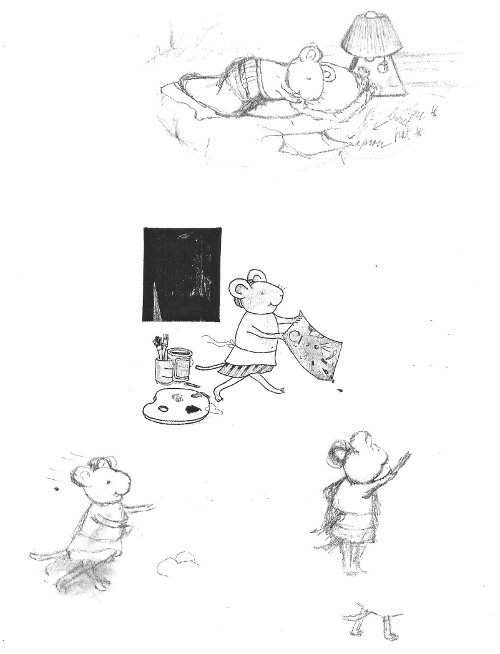

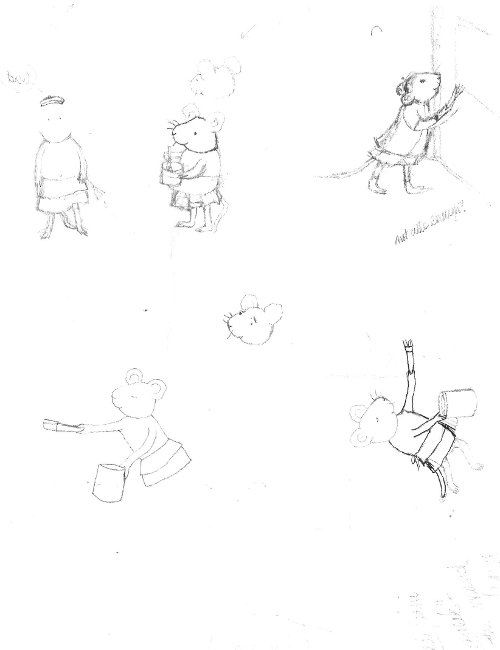
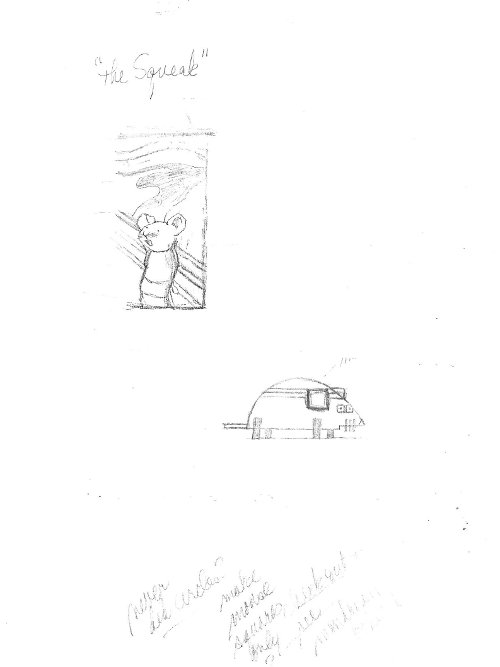
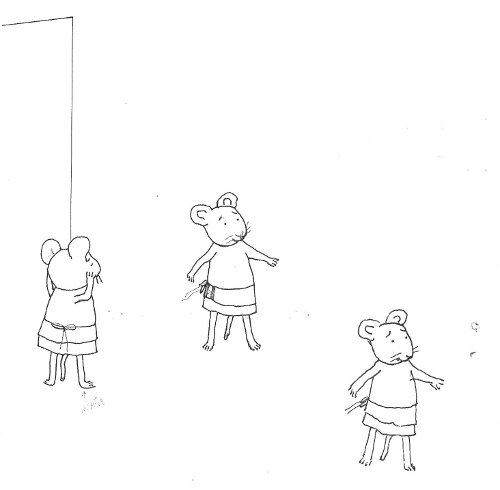



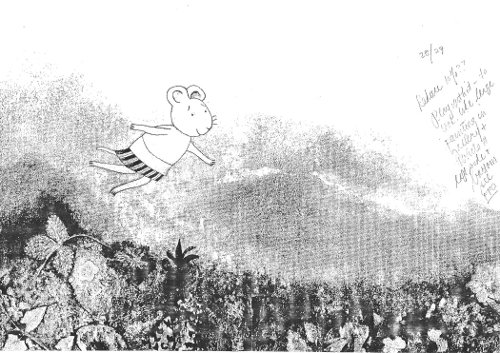


What a wonderful career path Jane has traveled. Her truth about of having to like the “actual doing”, whether painting or writing, is important. And that Cheddar Cheese Soup can kills. I am pretty sure somewhere on an upper shelf, gathering dust, I have my college copy of History of Art. Look forward to meeting the new Jansen. Great interview.
GREAT interview!!! 🙂
Jules:
I am going to print out this post so I can take it with me wherever I go; it’s intelligent, heartfelt and so true. I really appreciate her viewpoint on the physicality of the book. Many thanks, Jane Breskin Zalben.
Ahhhhhhhhhhhhhhh!
CHEDDAR CHEESE SOUP!!!!!!
My life is now complete. 🙂
Lovely interview. Jane speaks so well about her journey and I’m thankful for the 40 minute break I’ve taken this morning with her. Very inspirational. THank you both. (and that Mondriaan mouse is a hoot!)
So enjoyed this wonderful interview. Thank you Jane for sharing your sketches as well.
I became friends with Jane Zalben the day we met for lunch back when she’d been asked to do the pictures for my book AN INVITATION TO THE BUTTERFLY BALL. Gosh, that was a long time ago. We did two books together and have remained friends for years and years and years. This new book looks smashing, and I can see why it was bought on the spot!
The Other Jane
i am indebted to jules for doing such a great job, the people who supported my career – emotionally and financially – and now these comments are so much fun to read! i work alone in a room mostly and to know people read or appreciate the hours spent, well, that is heartfelt. truly! and personally, i would rather have clam chowder – new england, black bean or matzoh ball soup – but i don’t think warhol did matzoh balls!
What an engaging and real life interview! I applaud Jane Breskin Zalben for her honesty and hope she gets the widespread recognition (and sales!) that Mouseterpiece deserves. Having read Four Seasons. I am in awe of her versatility. It is fun to get hooked on such a prolific author. Are they available as ebooks?
Thank you, Jules, for a wonderful interview with my dear friend Jane. I am looking forward to holding MOUSTERPIECE in my hands, reading a wonderful story … and being delighted by Jane’s and Janson’s art!
Jane is a masterpiece, herself!
Well, this interview takes me back! Jane and I became friends when we were both Fine Arts majors at Queens College. Studio’s with Marvin Bileck made me realize for the first time that there was a place for Fine Art in children’s literature, and luckily for us, editors were thinking the same thing. A thoughtful, intelligent interview, loved it…I still have my edition of Jansen’s, History of Art, and it’s hard to go through a Richard Serra exhibit without thinking of his “Composition” studio class…what a hoot!
What a lovely and valuable interview –so honest, practical, and realistic. “Keep your day job,” is an indisputably useful piece of advice. But don’t neglect the passions that make life worth living, like art. Jane (and her husband Steve) have been dear friends since I first met Jane decades ago when we both appeared at a literary program at Brooklyn College. Her Beni books are marvels of delightful story-telling and amazingly detailed artistry. The fact that she so deftly issues forth with children’s titles in so many different genres boggles the mind of those of us not so versatile. Her latest venture about the little mouse artist is filled with Jane’s trademark imagination and will make an unforgettable introduction to art for any tyke. Adult readers will delight in performing it for their eager listeners. Since the book was published last month, Jane’s Janson will be known as the August rodent. (Didn’t he do The Thinker?) Bravo, Jane!
Jane: Best wishes with all of your stories and art! I say this in all sincerity: What a cute little mousie. Love the soup can page especially. I have Four Seasons in my to-read pile. Be well!
What insights in this lovely interview! I’m moved not only by Jane Breskin Zalben’s journey but also her deep reflections, on art, life, and the pursuit of passions. I’d be very interested to learn more about her perspectives on the art of storytelling and children’s literature as it has evolved during her professional career. Particularly, the female experience stood out a lot, and can resonate with girls vying to pursue their goals in any number of fields.
Janson is a captivating little character. I absolutely adore the sketches to be honest; witnessing the evolution of a creation intrigues me. And being able to introduce modern art and the joy of living a dream through her exploits works so well.
Jane, brilliant, talented Jane! What a wonderful career, attitude, life! You’re the reason why at 69 I’m still reading picture books. And Young Adult fiction. I can think of a few other adults who could use a Mousterpiece education.
I, too, am printing this one out to look at and look at – wonderful! thanks Jane Breskin Zalben and Jules!!
[…] reading Seven Impossible Things Before Breakfast‘s interview with Jane Breskin Zalbin (http://blaine.org/sevenimpossiblethings/?p=2419), one quote struck me especially […]
Life is meant to be simple-carry on doing what makes you happy.